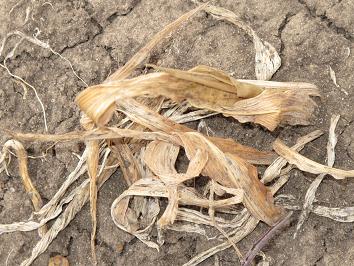Below-average March to May rains forecast in the Eastern Horn – current crisis likely to worsen
Issued: March 15, 2011
 In the eastern Horn of Africa, households in pastoral and marginal cropping areas currently face moderate to extreme levels of food insecurity due to an ongoing drought, deteriorating purchasing power, and, in some areas, limits on the delivery of humanitarian assistance. Based on the findings of a multiâ€agency scenario building process, the likely poor performance of Marchâ€May rainfall is expected to result in further deterioration in food security (Figures 1 and 2). Even if Marchâ€May rains are average, food security in the region’s eastern sector is expected to remain critical through at least May/June 2011. Largeâ€scale emergency assistance to address current and likely food insecurity is needed; additional contingency planning, given the possibility of a major crisis, should also be implemented.
In the eastern Horn of Africa, households in pastoral and marginal cropping areas currently face moderate to extreme levels of food insecurity due to an ongoing drought, deteriorating purchasing power, and, in some areas, limits on the delivery of humanitarian assistance. Based on the findings of a multiâ€agency scenario building process, the likely poor performance of Marchâ€May rainfall is expected to result in further deterioration in food security (Figures 1 and 2). Even if Marchâ€May rains are average, food security in the region’s eastern sector is expected to remain critical through at least May/June 2011. Largeâ€scale emergency assistance to address current and likely food insecurity is needed; additional contingency planning, given the possibility of a major crisis, should also be implemented.
Following two seasons of average to aboveâ€average rainfall in most areas, the 2010 Octoberâ€December rains were extremely poor – by some measures the worst in thirty years – across the region’s eastern sector. January/February harvests completely failed in most cropping areas. In pastoral areas, poor rainfall has severely limited both livestock conceptions and pasture/water availability. Though food is generally available in the region, February retail prices for red sorghum in Baidoa, Somalia, rice in Gode, Ethiopia, and maize in Mandera, Kenya are 130 percent, 30 percent, and 28 percent above February 2010 prices, respectively, and are generally higher than 2008 foodâ€price crisis levels. Prices are expected to continue rising through at least June/July 2011. Household purchasing power has declined across these same drought–affected areas as reductions in cattle prices and wages and extremely high water prices have exacerbated the impact of increased food prices. Poor households in most pastoral and marginal cropping areas currently face difficulty in meeting basic food and water survival needs, and levels of acute malnutrition are above emergency thresholds and increasing in many areas.
Download full report (PDF, 768KB)

















